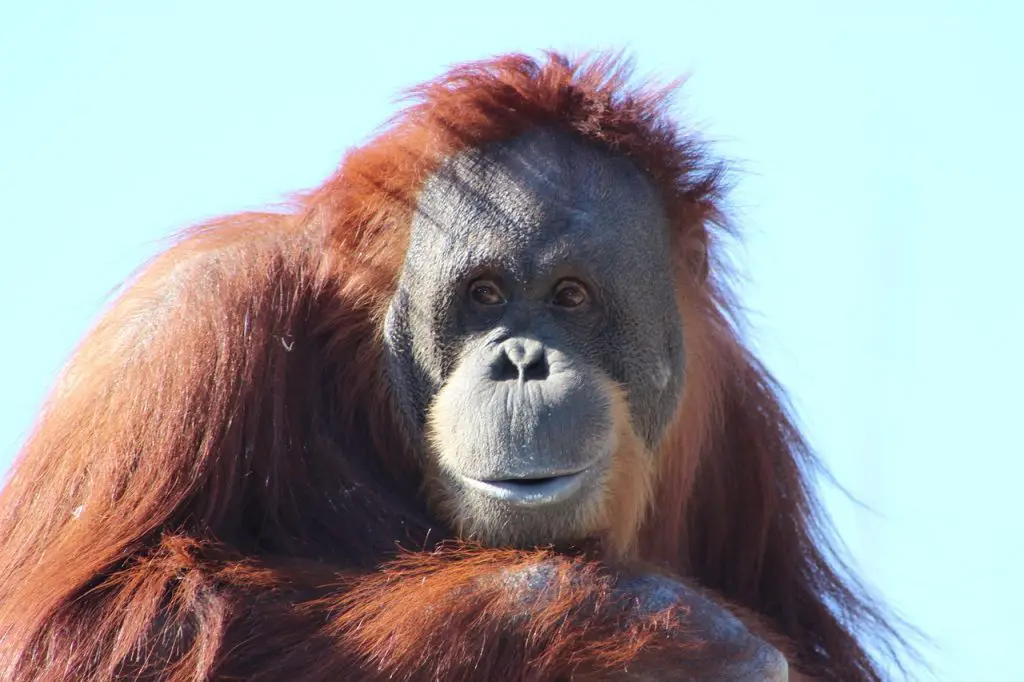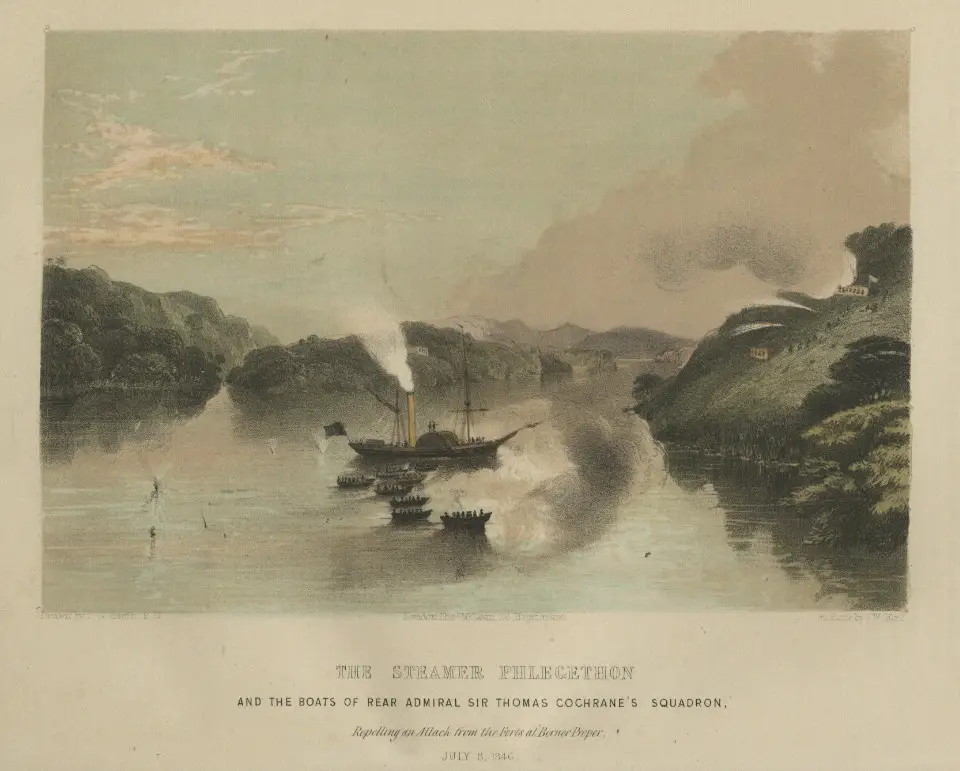Operation Semut was a series of reconnaissance operations that took place in Sarawak.
It was carried out by Australia’s Z Special Unit in 1945 during the final days of World War II (WWII).
Altogether, there were four operations were undertaken under Operation Semut.
Their main objectives? To gather intelligence and to train the indigenous people in launching guerrilla warfare against the Japanese.
Commando! The M/Z Unit’s Secret War Against Japan (1996) is a book compiled and edited by A.B. Feuer.
The book is a compilation of stories from Australian commandos who fought against the Japanese in Borneo during WW2.
In it, readers can find an interesting story of Australian Lieutenant Rowan Waddy and his experience in Sarawak. He was a part of Operation Semut IVB.
From Aug 13 to 23, 1945, Semut IVB sailed out of Labuan via HMAS Tigersnake and moored at Mukah. Together with Lieutenant Ron Hoey, Waddy paddled Hoehn folboats (collapsible canoes) journeyed along the Mukah river to engage any remaining hostile Japanese groups.
They continued to work in Sarawak until October 1945 to secure the surrender of remaining Japanese troops.

Rowan Waddy on working with local guerrillas
Here, Waddy had the opportunity to work with the locals, especially the Ibans.
Commenting about them, Waddy stated, “The Ibans are a paradox. Despite their warrior reputation, they are a happy, fun-loving people- highly superstitious and tattooed – with long black hair and cut-extended earlobes. The Ibans are also loyal, brave and love to fight. Their weapon is the blowpipe (sumpit) using poisoned darts. The dart is about 20cm long and perforated near the point. After the dart enters the skin, the shaft easily breaks off, leaving the poisoned tip embedded in the flesh. It can take from 20 minutes to 24 hours of agonizing suffering to kill a person. There is no doubt that the Japanese feared the Ibans more than they did the Australians.”
Waddy also commented on how the Ibans were always in the lead while on patrol, always moving without caution and always looking for action. Waddy often was forced to hold them back.
Additionally, the Ibans had great eyesight, even working in the dark jungle. In one of the nights which Waddy described as ‘so dark that it was impossible to see one’s own foot’, an Iban man who carried spare magazines for his gun stayed closed by.
Waddy shared, “He constantly made slight physical contact, which was indeed reassuring. If the Iban wanted me to stop, he would give a gentle tug on my sleeve, slide his arm over my shoulder, and point in the direction he wanted to look, but I could not see or hear anything unusual.”
The importance of local cooperation
It was crucial for these soldiers to work closely with the locals. According to Waddy, agents inserted into enemy-occupied Europe did not have the problems of colour or stature.
There, they blended in with the local population but not in Borneo or throughout the Southwest Pacific.
“White Europeans, with large builds, attracted a lot of unwelcome attention. Therefore, to ensure success, it was essential that the local population was friendly and cooperative,” Waddy noted.
Thankfully for Waddy and most Semut operatives, the locals were being cooperative to them.
Although the Ibans in particular never heard of Australia before, and thought the Semut operatives were British.
Rowan Waddy and his Japanese head
During one of the combats under the Semut Operation, Waddy successfully killed a Japanese soldier.
He described what happened after the battle when he returned to his boat, “The Ibans followed after burying the body. I had no sooner taken my seat in the perahu than a thin, torn burlap bag was dropped at my feet. To my horror it contained the bloody head of the soldier I had killed.”
The Iban guerillas had cut off the soldier’s head, extracted the brain and brought it back with them.
From there, Waddy managed to witness Iban traditions no longer practiced to this day.
According to Iban tradition, the head officially belonged to Waddy. For the next couple of weeks, the head was always hung where he slept.
Describing the smoking process, Waddy wrote, “The head was positioned above a slow fire that was covered with thatching, allowing the smoke to continuously encircle the head. The heat caused the fat, especially from around the cheeks, to slowly drip and sizzle in the fire – not unlike sausage a barbecue grill. At all times there were Ibans squatting and gazing longingly, with admiring smiles, at the head and the sizzling.”
Waddy goes on to describe the rest of the effects of the smoking process, and how the smoking drew the skin taut across the face, and the skin split down one side, revealing the teeth, and “leaving the head with a permanent grin.”
Celebrating the head and its owner, Rowan Waddy
After the skin on the head was dried, it was now the time for the Feast and Dance of the Enemy Head.
According to Waddy, it was an amazing experience.
The event lasted two days and nights which began outside the longhouse before moving inside the long communal room in from of the fifteen doors.
As the “owner” of the head, Waddy was one of very few white men who had ever witnessed and participated in the head dance.
There were dancing and chanting as well as beating of the gongs and drums. While Waddy described the atmosphere and excitement as electric, he said that the ceremonies were sparse compared to what they normally would have been.
This was due to the food shortages forced upon the locals by the Japanese.
Rowan Waddy on the tension between the Chinese and the Iban
Speaking about the locals, Waddy could not help but notice the tension between the Iban and the Chinese during the war.
He noted, “There is no love lost between the Chinese and the Ibans. The Chinese are traders, and comparatively wealthy. On the other hand, the Ibans are simple, communal jungle people who love to hunt heads including Chinese collaborators. The Ibans look down upon the Chinese – the Chinese fear the Ibans.”
Waddy related a story on how he received an unconfirmed report that a small party of Japanese were hiding out in a nearby village when he was in Bintulu.
Since he was busy at the time, his fellow companion Penghulu Blaja from Kanowit volunteered himself to go have a look.
He agreed but he instructed them not to attack or kill any Japanese soldiers, only to observe.
The next day, a group of Chinese showed up wanting to see the Military Governor.
Apparently, there was a loud argument between the Chinese and Iban the previous night and several Chinese were killed.
Waddy immediately sent for Blaja. As it turned out, the penghulu was behind the attack.
After sending the Chinese with Malay police escort, Waddy asked the penghulu why he disobeyed his order.
To that Blaja insisted that he had not disobeyed Waddy’s order as the order was not to kill any Japanese. Blaja argued however that Waddy never told him not to kill Chinese, especially those who had collaborated with the enemy.
Waddy eventually was forced to admit that Blaja had a point.

Rowan Waddy’s final goodbye to Sarawak
Not long after that, the operatives received orders that all special operations in Sarawak were to cease and members of Z unit were to be out of the field by Oct 15, 1945.
On Oct 11, Waddy handed over command of his district to Major Futter of the British Borneo Civil Affairs Unit (BBCAU).
Waddy wrote, “The night before we left Bintulu, Les Royle, Max Newton and I were treated to a memorable farewell party – an unforgettable feast with ample supplies of rice wine. We played many games with Penghulu Blaja and the happy Ibans. The festivities went on until the early hours of the morning.”
The Australian commandos reportedly taught the Ibans how to play musical chairs and how to dance the Hokey Pokey.
On his final thoughts about leaving Sarawak, Waddy stated, “I had mixed feelings when our Catalina took off later in the day. I had left many friends behind. But, for the first time, I realised that the war was finally over, and I had survived. Still feeling the effects of our emotional farewell, I did not remember much at all about that flight.”
























